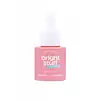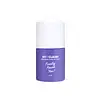What's inside
What's inside
 Key Ingredients
Key Ingredients

 Benefits
Benefits

 Concerns
Concerns

No concerns
 Ingredients Side-by-side
Ingredients Side-by-side

Water
Skin ConditioningCaprylic/Capric Triglyceride
MaskingGlycerin
HumectantButylene Glycol
HumectantDibutyl Adipate
EmollientSaccharide Isomerate
HumectantGlyceryl Stearate
EmollientParfum
MaskingKojic Acid
AntioxidantPEG-100 Stearate
Cysteamine Hcl
AntioxidantPEG-40 Hydrogenated Castor Oil
EmulsifyingLavandula Hybrida Herb Oil
PerfumingCetyl Alcohol
EmollientPEG-75 Stearate
Ceteareth-20
CleansingAllantoin
Skin ConditioningMorus Alba Bark Extract
Skin ConditioningPropylene Glycol
HumectantAloe Barbadensis Leaf Extract
EmollientGlycine Soja Seed Extract
Skin ConditioningCarbomer
Emulsion StabilisingPhenoxyethanol
PreservativeTriethanolamine
BufferingChlorphenesin
AntimicrobialPentaerythrityl Tetra-Di-T-Butyl Hydroxyhydrocinnamate
AntioxidantBHT
AntioxidantXanthan Gum
EmulsifyingCaprylyl Glycol
EmollientTocopheryl Acetate
AntioxidantCitric Acid
BufferingSodium Citrate
BufferingEthylhexylglycerin
Skin ConditioningWater, Caprylic/Capric Triglyceride, Glycerin, Butylene Glycol, Dibutyl Adipate, Saccharide Isomerate, Glyceryl Stearate, Parfum, Kojic Acid, PEG-100 Stearate, Cysteamine Hcl, PEG-40 Hydrogenated Castor Oil, Lavandula Hybrida Herb Oil, Cetyl Alcohol, PEG-75 Stearate, Ceteareth-20, Allantoin, Morus Alba Bark Extract, Propylene Glycol, Aloe Barbadensis Leaf Extract, Glycine Soja Seed Extract, Carbomer, Phenoxyethanol, Triethanolamine, Chlorphenesin, Pentaerythrityl Tetra-Di-T-Butyl Hydroxyhydrocinnamate, BHT, Xanthan Gum, Caprylyl Glycol, Tocopheryl Acetate, Citric Acid, Sodium Citrate, Ethylhexylglycerin
Ingredients Explained
These ingredients are found in both products.
Ingredients higher up in an ingredient list are typically present in a larger amount.
Allantoin is a soothing ingredient known for its protective and moisturizingg properties. Because of this, it is often added to products with strong active ingredients.
Studies show higher concentrations of this ingredient can promote wound healing.
Though it can be derived from the comfrey plant, allantoin is produced synthetically for cosmetic products to ensure purity.
Learn more about AllantoinButylene Glycol (or BG) is used within cosmetic products for a few different reasons:
Overall, Butylene Glycol is a safe and well-rounded ingredient that works well with other ingredients.
Though this ingredient works well with most skin types, some people with sensitive skin may experience a reaction such as allergic rashes, closed comedones, or itchiness.
Learn more about Butylene GlycolChlorphenesin is a synthetic preservative. It helps protect a product against bacteria in order to extend shelf life. In most cases, Chlorphenesin is paired with other preservatives such as phenoxyethanol and caprylyl glycol.
Chlorphenesin is a biocide. This means it is able to help fight the microorganisms on our skin. It is also able to fight odor-releasing bacteria.
Chlorphenesin is soluble in both water and glycerin.
Studies show Chlorphenesin is easily absorbed by our skin. You should speak with a skincare professional if you have concerns about using Chlorphenesin.
Learn more about ChlorphenesinGlycerin is already naturally found in your skin. It helps moisturize and protect your skin.
A study from 2016 found glycerin to be more effective as a humectant than AHAs and hyaluronic acid.
As a humectant, it helps the skin stay hydrated by pulling moisture to your skin. The low molecular weight of glycerin allows it to pull moisture into the deeper layers of your skin.
Hydrated skin improves your skin barrier; Your skin barrier helps protect against irritants and bacteria.
Glycerin has also been found to have antimicrobial and antiviral properties. Due to these properties, glycerin is often used in wound and burn treatments.
In cosmetics, glycerin is usually derived from plants such as soybean or palm. However, it can also be sourced from animals, such as tallow or animal fat.
This ingredient is organic, colorless, odorless, and non-toxic.
Glycerin is the name for this ingredient in American English. British English uses Glycerol/Glycerine.
Learn more about GlycerinPhenoxyethanol is a preservative that has germicide, antimicrobial, and aromatic properties. Studies show that phenoxyethanol can prevent microbial growth. By itself, it has a scent that is similar to that of a rose.
It's often used in formulations along with Caprylyl Glycol to preserve the shelf life of products.
Water. It's the most common cosmetic ingredient of all. You'll usually see it at the top of ingredient lists, meaning that it makes up the largest part of the product.
So why is it so popular? Water most often acts as a solvent - this means that it helps dissolve other ingredients into the formulation.
You'll also recognize water as that liquid we all need to stay alive. If you see this, drink a glass of water. Stay hydrated!
Learn more about WaterXanthan gum is used as a stabilizer and thickener within cosmetic products. It helps give products a sticky, thick feeling - preventing them from being too runny.
On the technical side of things, xanthan gum is a polysaccharide - a combination consisting of multiple sugar molecules bonded together.
Xanthan gum is a pretty common and great ingredient. It is a natural, non-toxic, non-irritating ingredient that is also commonly used in food products.
Learn more about Xanthan Gum